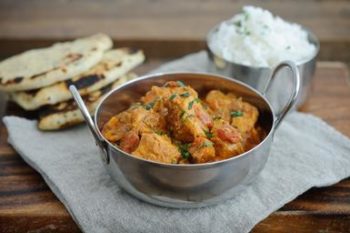So you have been in India for a little while. Learnt to do the namaste greeting, visited countless historical monuments, sampled fare at most of the ‘must eat’ places. You are now almost ready for the real deal: a meal at an Indian house.
- Wrangling the invite
You would have made Indian friends by now. The trick is to lead the conversation to food, then to homemade food and then to the fact that his mother, wife or even the grandmother cooks like no one else you know.
At this crucial juncture, put on a suitably forlorn expression and declare: ‘Oh! I wish, I could have food like that, no restaurant food can compare to a mother’s/wife’s/grandmother’s cooking…’
There, it is done. From then on, matters follow a pre-determined chain of events and one fine day you are invited to lunch or dinner to your friend’s house.

Indian sweets come in a bewildering range of varieties. Enlist local help when buying.
- Etiquette: a rough guide
No, you are not expected to carry a bottle of wine. Instead, you may carry a box of sweets. Ask your other Indian friends about the best sweet shop and which sweets to carry. Rasogullas (white cheese balls in sweet syrup) and Kaju Ki Barfi (cashew sweets) are perennial favorites.
When you enter, quickly scan the area near the main door. Do you see a shoe rack or even a lot of shoes parked there? If yes, this means you have to take off your shoes. Even if you don’t see any such signs, offer to remove shoes. They will be impressed.

The namaste greeting is the first thing a visitor learns
Expect to see a lot of people. This is not going to be a situation where you are there with the host and his wife. You will probably be meeting his parents, her parents, a couple of grandparents, random cousins with wives, his nephews and nieces and a couple of close neighbors. Do namastes all around.
Be prepared for very personal questions like: Are you married? Do you have children? What does your husband/wife do? Where do you stay? Is it a house or a flat? Is the house/flat your own? You get the drift…Also be prepared to be called Uncle or Auntie by people who are just a few years younger to you. But then, you probably know that already.
- Your counter attack strategy
Here are a few tips for you to take the conversation initiative and make sure you are asking most of the questions and not scrambling from one answer to another.
- Ask any young teenager in the room about his studies: This will immediately lead to his entire family pitching in with their opinions on everything from his school, to his special coaching classes, to his prospects of clearing the IIT exam.
- Start a discussion on Cricket: say something like, ‘Will Sachin play the next world cup?’
- If you are Mumbai, talk about the rains, if you are in New Delhi, talk about the heat.
Food is served
Ok, enough talk; food is served. No, no, you are not supposed to sit cross-legged as you have seen in the yoga books, you sit at the dining table. But wait, before you do, you have to:
- Wash your hands
This is very, very important. The dining area generally has a basin for this purpose. If you can’t see it, ask where it is.
The next, and most important, thing to remember is to use your RIGHT HAND to eat. Forget you have a left hand.
If you are in north-India, you will be served roti (Indian bread) with an assortment of vegetable preparations. Break the roti, dip it into the subzi (vegetable) and begin.
Not everyone will sit down to eat. Some will just stand behind you and encourage you: ‘Have some more, na’. (na is a typical Indian English expression and can be freely used instead of please, isn’t it, aren’t you, etc; for example: ‘You are coming, na?)
But these are mere distractions. Focus on the food. You have never had anything this tasty before. And chances are, it is all vegetarian. Keep an eye out for your hostess. She will periodically appear out of the kitchen and pile your plate with roti , subzi or even rice while you are talking to someone standing behind you.
The meal only ends when you have fought off all entreaties of ‘one, more’. Or so you think.
There is a fresh onslaught brewing. The dessert cometh! Typically, the dessert will be homemade, creamy and full of calories. And yes, you are supposed to have a ‘little’.
After the meal, remember to wash you hands, rinse your mouth with water and declare to the entire assembly:
‘Bahut accha khana tha’ (The food was great).
Then on, say your namastes, praise the food, promise to come again, praise the food, wish good luck to the aspiring engineer, nod your head respectfully to the elders, praise the food and begin the long walk down to the place you are staying. Believe me, you will need the exercise.
The thali changes from region to region:

A south-Indian thali. Here rice rules.
(Photo credits: vm2827, kaustov, ahsup, sistak, Ian Muttoo, taylorandayumi)
This is Sanjay’s first post for PocketCultures. A linguistics graduate, advertising copywriter and an itinerant traveler, Sanjay lives in New Delhi and will be sharing more insights about life in India in the months to come. You can also find Sanjay on Twitter @brokenquill or at his blog about New Delhi.
Read more about food:
Southern comfort food
Red peppers and feta cheese
Feijoada in Brazil








enjoyed this post & liked the counter attack strategy 🙂
Thanks! Hope it helps, the next time you visit India.
Very useful advice! I hope I will get chance to experience this one day. After having prepared my counter attack, of course!
You probably know already that Indian food is very popular in the UK. For some reason the roti didn’t make it though. We just know the rice and naan bread. It’s a pity because the roti is really good!
I think the roti did not make it because of a simple reason: it is labor intensive to make. A naan on the other hand comes flying off the tandoor in a jiffy.
I also enjoyed the article. It was funny and informative, especially the counter attack strategy! Some really good tips there, and I’m going to put them into use. 8)
And better than the food was good…bahut mazaa aaya (a lot of fun came). 😉
@Sharell: Yes, Bahut mazaa aaya is also a great response. Though your translation is a little off.
The complete phrase is Mujhe(I) bahut(great) mazaa(fun) aaya(had): I had great fun/I had a great time.
@sharell : Also, loved your blog/
Hello!!!!Namaste
Well Indian dishes are authentic and varies from place to place!!!
Few of the famous Indian dishes are Punjabi,Bengali,Gujrathi and South Indian Dish!!!!
Thanks!!!!!!!!!!